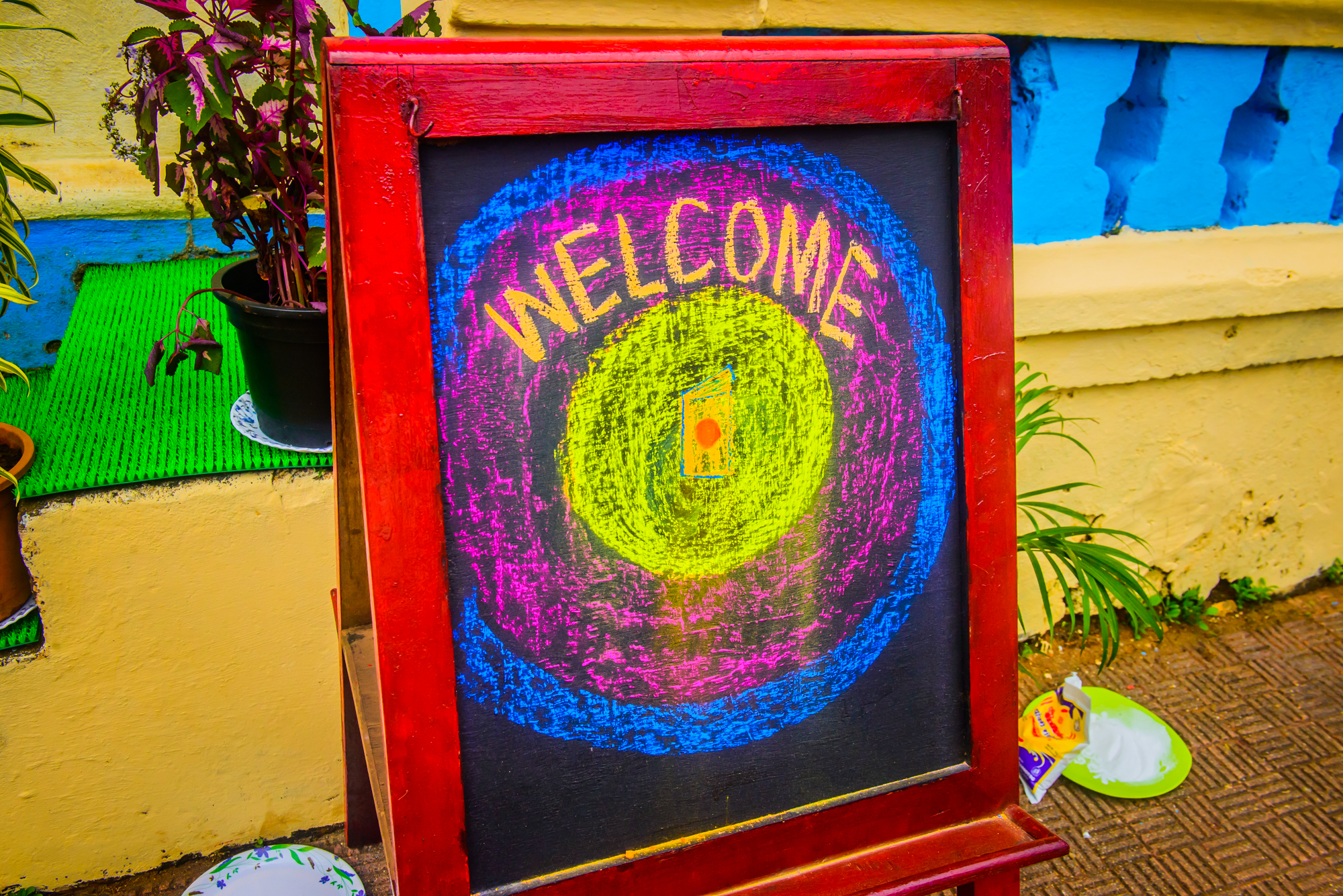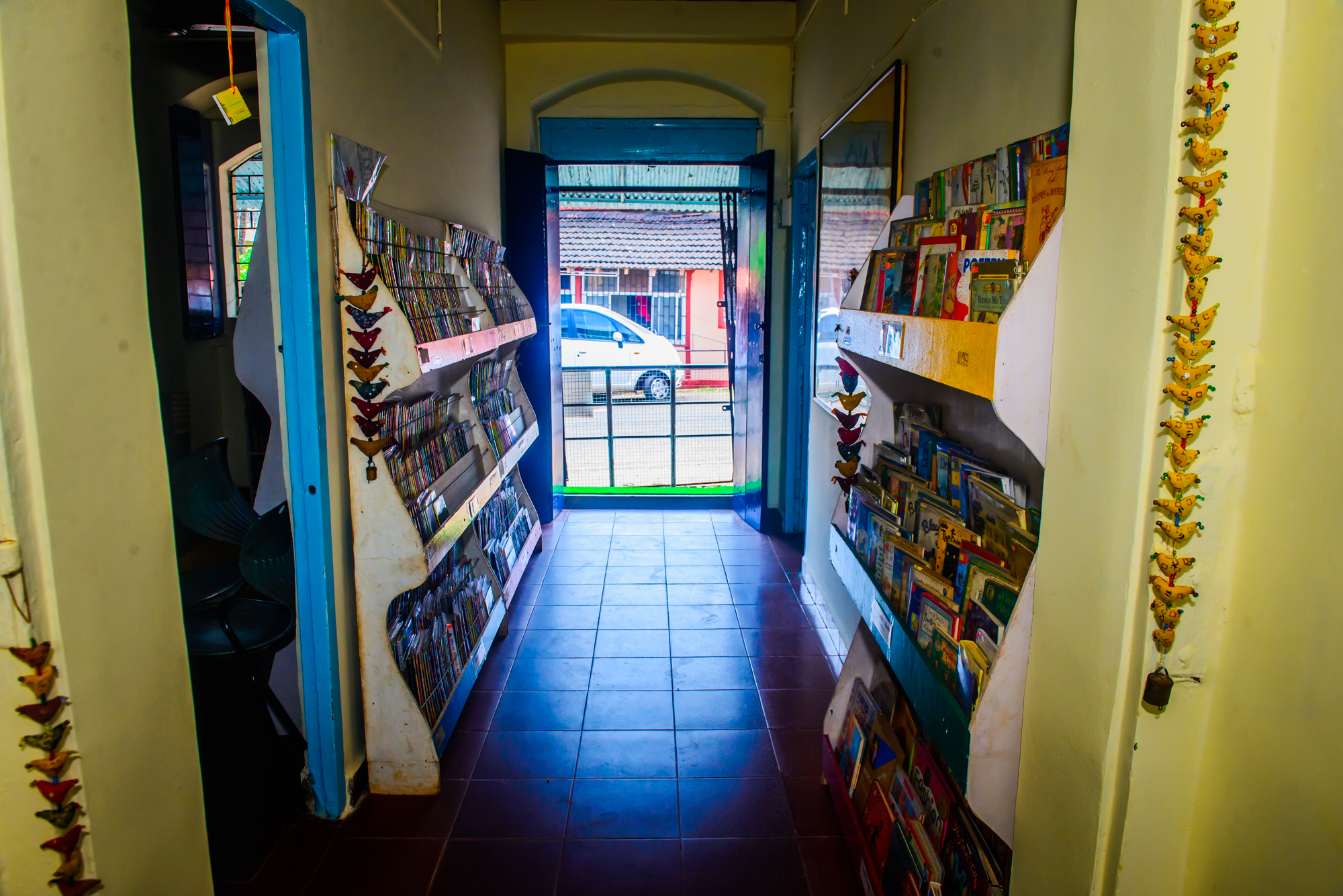The library at Bookworm has open doors, open shelves, open programming, and rests on a concept of open access and collaborative ownership.
The openness which has sometimes resulted in missing books, disappearing amounts from the cash box, and other mysterious happenings, has never been challenged with any other model. This strongly held value has permeated into the space, its relationship with community and others, and defined the core of every practice at Bookworm.
A few months ago, every person and organisation was jolted into a state of confusion when events abruptly stopped everywhere. As the virus slowly crept into each space, lock-down became inevitable, the gaps and strata in society more prominent, and the library was deemed a non-essential service. While the stringent lock-down lasted, the library at Bookworm was closed, a first in its 15 years of existence. The library had never closed for more than two days at a stretch. This was a fact. The library had now closed for over a month. This was now a new fact.
As soon as the curfew was lifted, the doors to the library opened and we announced the reopening with due care and precautions. However, each day brought limited, hesitant footsteps that hurried in and hurried out. The library was open but was it really? What could be done in a situation where access is blocked by reasons beyond our control?
Technology at Bookworm has played contrasting roles. It has greatly supported our back end work, enabling us to record, catalogue and understand many aspects and patterns of reading more deeply. However, for front end activities, it has often been held at arm’s length by many of us and gingerly ventured into by some from time to time while attempting to disseminate. As the physical doors shut down one by one, the virtual world hummed and thrummed with connections that formed almost overnight. We watched as each initiative migrated to the online space and attempted to reach out through the screens that could be accessed by most in the English speaking world.
Questions crept up. When a vision says ‘to every girl and boy’, how many are we excluding even as we convince ourselves that we may be including some? As we are locked down, opened out, directed this way and that by powers beyond, where in this chaotic authoritarian regime, does a space exist for a secular democratic space, a library?
The library is formed in response to the community within which it exists. It evolves and reaches in collaboration with those around. In the absence of this community, the library seemed lost and meaningless. Our Mobile Outreach Program (MOP) sites turned erratic (as smaller lock-downs were imposed from time to time in correlation to cases that increased and decreased), and reopening of schools remained a distant vague timeline.
The last month has been a month of much change, but also of constancy. We are slowly accepting and acclimatizing our way into the virtual, while also determinedly holding on to the present and the physical. If members are not coming here, we could go to them. Sujata’s idea of home delivering books, activities, recommendations, and other ideas, was initiated and responses are slowly starting to come in. While the library went through a thorough spring cleaning and cupboard cleaning, and book sorting, we also found other ways to adjust and nudge ourselves into this new way of working. While in other organisations, in house professional development came to an abrupt halt with a halt in funding, at Bookworm it increased.
While the library went through a thorough spring cleaning and cupboard cleaning, and book sorting, we also found other ways to adjust and nudge ourselves into this new way of working. While in other organisations, in house professional development came to an abrupt halt with a halt in funding, at Bookworm it increased.
We had book discussions and readings, book reviews and workshops, stitching and art activities. We explored themes through book lists, engaged in quizzes and readings around different themes, protested against current happenings, and critiqued and appreciated each new book arrival in the library. Stitching has become the new norm and every day the team gathers together to play a literacy game.
Virtual story time sessions are being explored, and boxes of books are being readied for delivery to different key people and areas that could enable borrowing and lending within the community.
Through all this, there is the certainty that what we do has to be based on what we envision. If we envision the library to be important, to be critical, to be Essential, this will transfer into how we reach out. There are many times when we look around the empty rooms, the clean shelves, and the waiting books, and we question what we are doing. At a time when the need for the library grows with each day, how are we attempting to bridge this, and rile against, the unknown and the stated ‘essential’?
The library remains one of the last few spaces that doesn’t just inform, but also listens. That doesn’t direct but guides, that doesn’t ‘teach’ but engages. By the values by which it stands, it permeates all boundaries, and breaks across strata and is even more essential because of these aspects.
Usha Mukunda, in her interview as part of ‘Live from Lock-down Library’, mentions that “the core of the library remains the same, believe this…”. This is our constant.
The current situation demands that we explore other ways to reach through the boundaries and limits that have been imposed. This is the change we are reaching toward.


